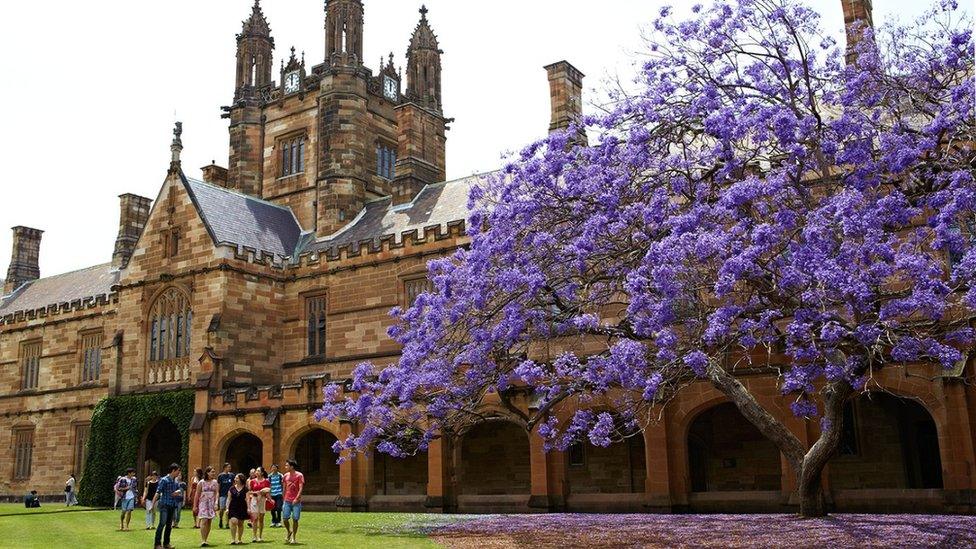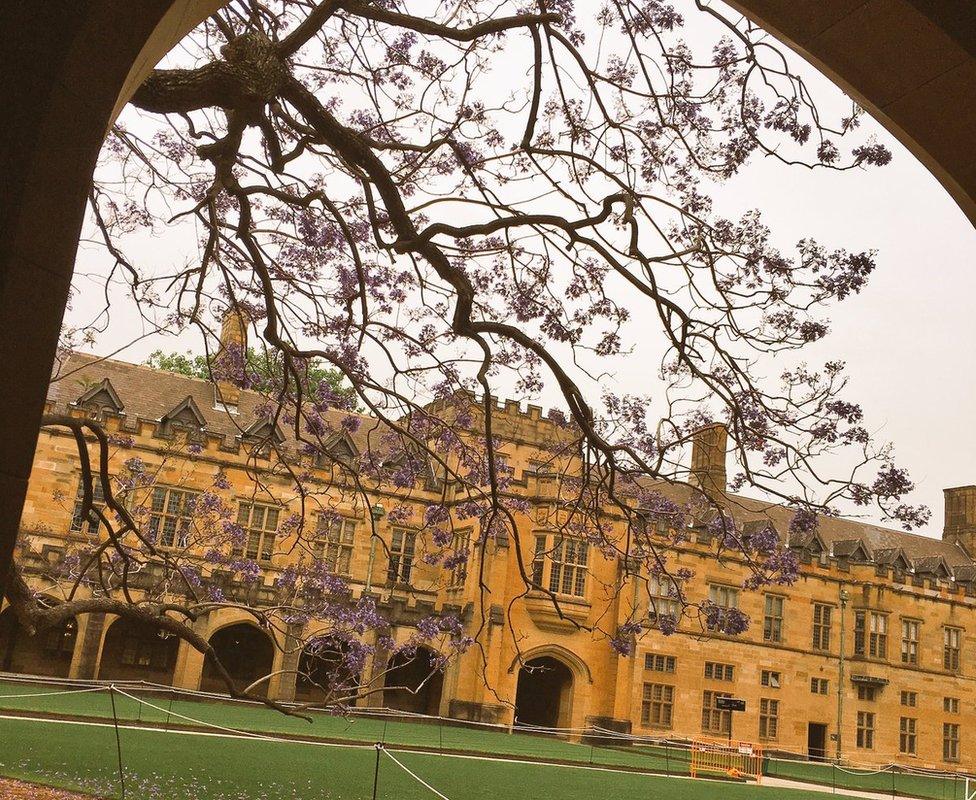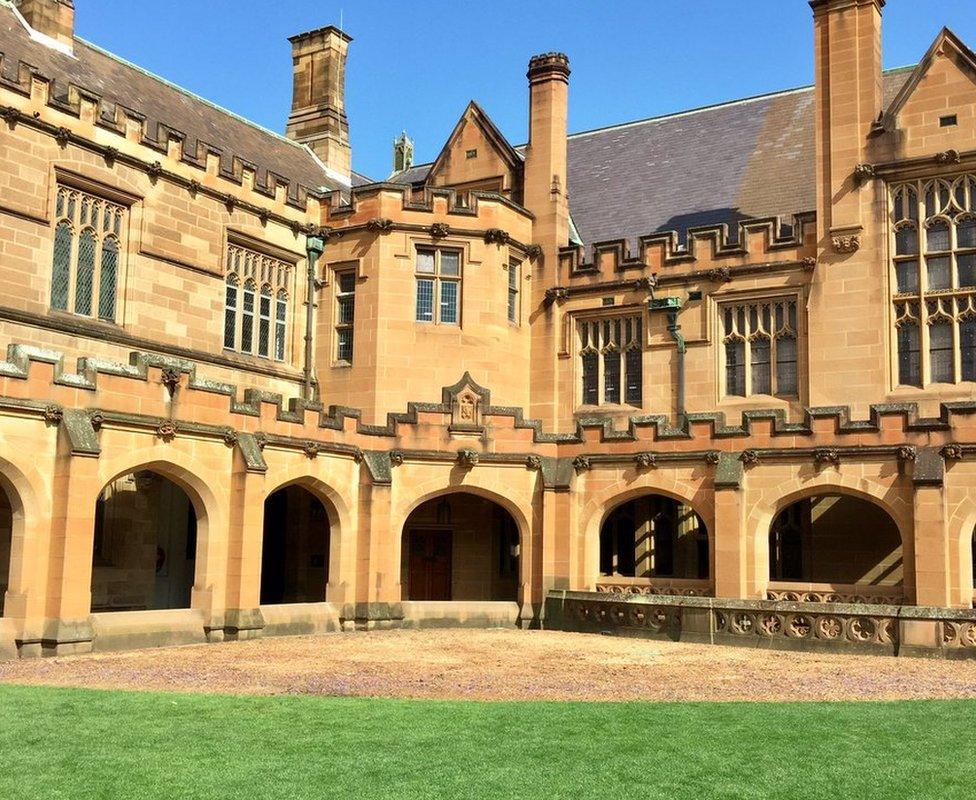Australians mourn tree that 'failed' university students
- Published

The jacaranda tree has been a fixture of the University of Sydney since 1928
Is it the end of an era, or a new chapter in a beloved mythology?
The sudden collapse of the University of Sydney's famed jacaranda tree has triggered a wave of grief in Australia, with staff and alumni mourning a key piece of campus folklore.
The 18m-wide tree had been at the centre of university life and graduation photos since arriving in the main quadrangle 88 years ago.
It was also steeped in superstition. A popular myth asserted that undergraduates would fail their exams if they neglected to study before the tree's first bloom, typically in October or November.
Lots of emotion for one tree
The university deemed the collapse seismic enough to send out a press release, external on Saturday, declaring it was "saddened to advise" the tree had toppled over during the night.
The news quickly trended on social media, with tributes saluting the "most famous tree in Australian education" as "majestic" and the university's "only redeeming feature". Its death was a "tragedy".
"I have walked past it and appreciated its branches hundreds, if not thousands, of times during my life," medical student Sarah Brennan wrote, sharing this photo she had taken the day before:

Sarah Brennan took this photo hours before the tree collapsed
Journalist Annabel Crabb said: "This is very sad news from overnight. But Lordy, I hope when I keel over I look this beautiful."
Lecturer David Smith wrote: "RIP jacaranda, which had a truly great life."
The exam myth
The jacaranda was planted in 1928 by Professor Gowie (EG) Waterhouse after a series of mischievous false starts, according Dr Craig Barker, who manages heritage tours of the university.
Prof Waterhouse envisaged a campus covered in jacarandas, but each time one was planted it would be mysteriously uprooted.
"Often it was students who were accused of pranks but many years later a number of university staff admitted on their retirement dinner that they had taken saplings/seedlings home with them," Dr Barker told the BBC.
The tree we know today even had two failed plantings before taking hold, he said.

The tree was quickly removed on Saturday, leaving the quadrangle looking bare
The exam myth soon followed, passed down eagerly through the generations of students. It was not often taken seriously but there "was always a slight tinge of panic and urgency" when the first purple flowers appeared, Dr Barker said.
The study tactic seemed to work for Australian author Peter FitzSimons.
"In 1980, I saw it was blooming, and realised I hadn't yet started studying. Went to my room, and emerged six weeks later. PASSED!" he tweeted.
Fortunately for future generations, the university took cuttings from the ailing tree in 2014 so it could one day be replaced.
"Students are reminded that the current tree had begun to bloom and we wish them all well for their final weeks of study for 2016," the university statement concluded.
Reporting by the BBC's Jay Savage.